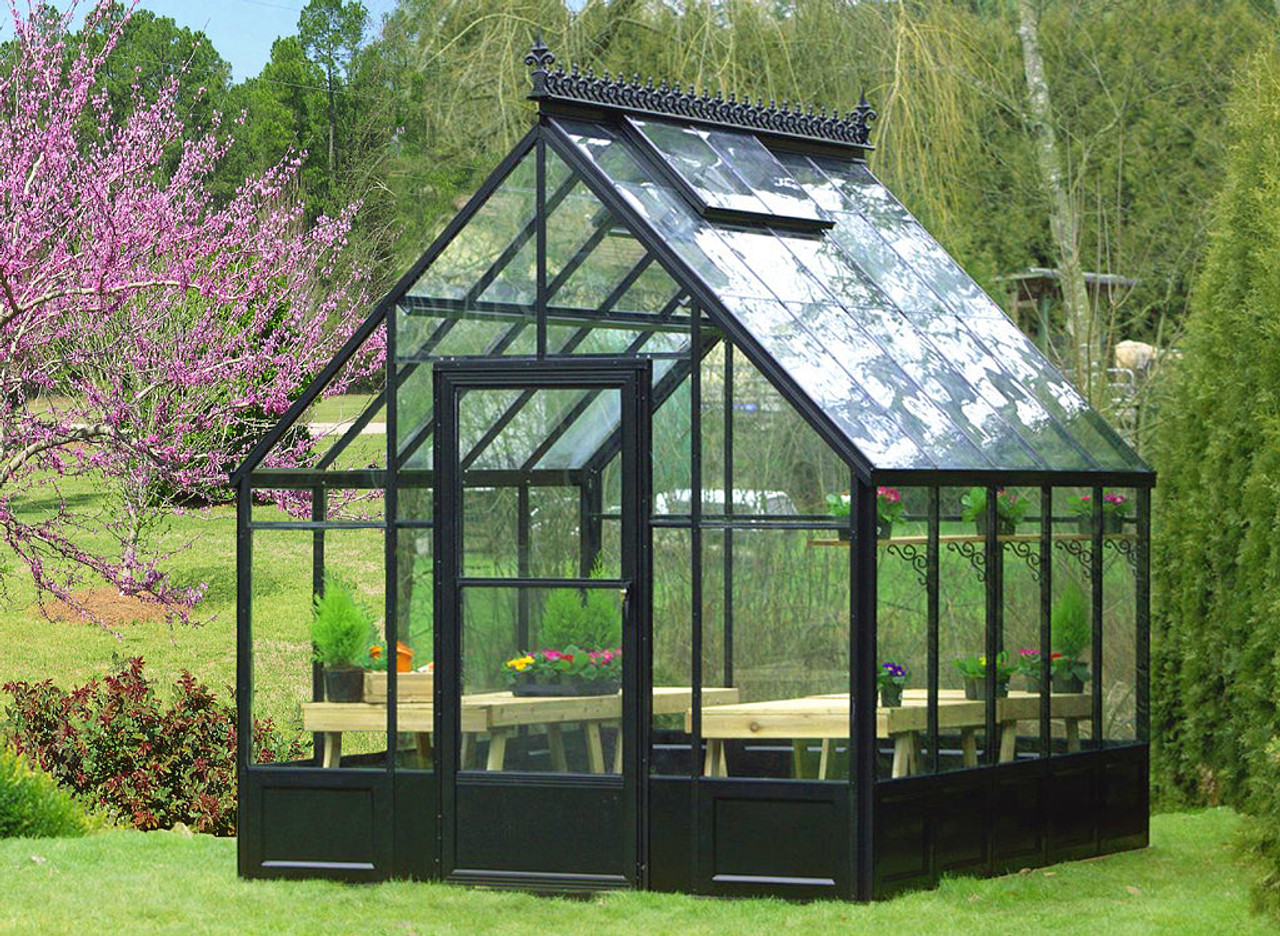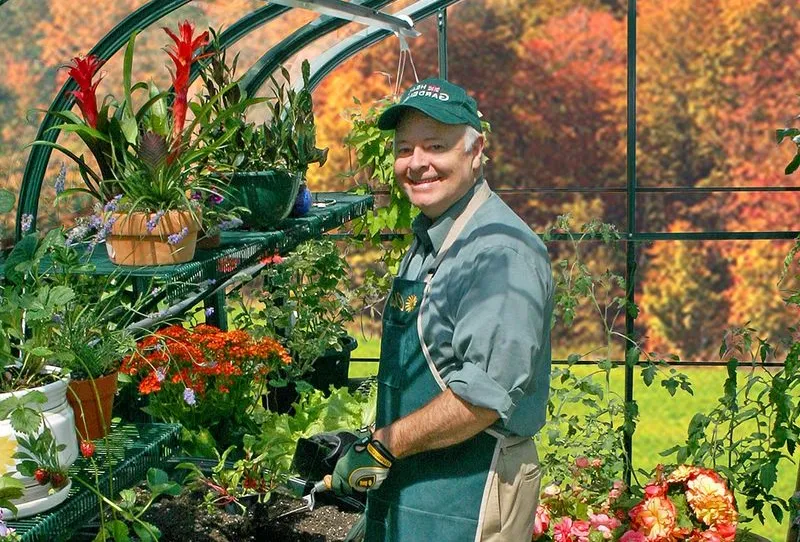Glass vs. Polycarbonate Greenhouse – Which Glazing is Better?
Cultivating plants in a greenhouse is both fulfilling and demanding. From managing temperature and humidity levels to combating pests and disease, numerous issues can impact the growth and yield of your hothouse crops. The material you choose for your greenhouse glazing also influences the success of your garden inside.
Whether you’re an experienced gardener or a newbie, comparing glass vs. polycarbonate greenhouses, especially in light transmission, heat retention, and other crucial factors, can guide you to the perfect structure for your garden.
Comparing Glass vs. Polycarbonate Greenhouses
Choosing the right material for your greenhouse is crucial to its effectiveness. Both glass and polycarbonate have pros and cons, and it’s essential to consider the specific climate you want to maintain inside your greenhouse to ensure your plants thrive.
Here are some key factors to keep in mind when deciding between glass and polycarbonate for your greenhouse:
| Feature | Glass | Polycarbonate |
| Cost | More expensive depending on features | More affordable depending on features |
| Light Transmission | Direct & consistent | Dispersed & uniform |
| Heat Retention | Loses heat quickly | Stable temperature |
| Aesthetics | Classic & elegant | Versatile & customizable |
| Installation | Professional installation required | DIY-friendly |
| Maintenance | More frequent cleaning | Easier cleaning |
| Durability | Vulnerable to damage | Resistant to impacts |
| Safety | Can shatter | Unbreakable |
-
Cost of material
Glass greenhouses have a classic, timeless look that radiates sophistication and charm. But this beauty often comes with a higher price tag, both for the materials and installation. The weight of glass panels demands a sturdier greenhouse frame, usually made from solid wood or heavy gauge powder-coated aluminum. This further adds to the overall cost.
Polycarbonate greenhouses are a more wallet-friendly option. Though they might lack the classic look of glass, they are a practical and cost-effective choice. Lighter than glass, polycarbonate panels also mean you can use a more affordable frame.
-
Light Transmission
Glass is known for its high light transmission properties. With minimal scattering, it ensures plants get consistent and direct light. This can be especially beneficial in areas where sunlight is scarce during winter.
The slightly opaque nature of polycarbonate panels disperses sunlight, ensuring plants receive a uniform spread of light. This reduces the chance of hotspots in the greenhouse, preventing some plants from getting too much light while others are left in the dark.
-
Heat Retention and Insulation
Glass tends to lose heat rapidly, which becomes a challenge in the colder months of fall and winter. Gardeners might need to install and run extra heating solutions, such as space heaters or heat sinks, leading to higher energy use and costs.
Polycarbonate ensures a stable temperature for your plants, reducing the reliance on external heating or cooling. Its design, often twin-wall or multi-wall with an air gap in between, acts as a buffer against temperature changes. It keeps the warmth in during colder times and helps avoid overheating on bright, sunny days.
-
Aesthetics and Design Flexibility
Glass greenhouses are prized for their classic and timeless aesthetic, bringing an element of elegance and charm that can elevate the beauty of your yard. If aesthetics are important to you, the traditional appeal of a glass greenhouse is unmatched.
While polycarbonate greenhouses might lack the classic allure of glass, they are versatile. With various thicknesses and colors in polycarbonate panels, you can pick what best fits your gardening preferences. Their lighter build also simplifies any adjustments or customizations to the greenhouse, ensuring it aligns with your garden’s design and thermal requirements.

-
Ease of Installation
Heavy, delicate glass panels can complicate the installation process. Their heft often requires professional assistance, increasing labor costs and time. Additionally, the greenhouse structure needs to be sturdy to bear the weight of the glass, adding another layer of complexity to the setup.
Compared to glass, polycarbonate panels are much lighter, simplifying the installation process. This makes them an excellent choice for DIY enthusiasts. The reduced weight eases the load on the greenhouse frame and can also translate to savings in installation and structural costs.
-
Maintenance
Glass greenhouses require regular cleaning to maintain their clarity and light transmission properties. Glass is prone to smudges, streaks, and watermarks, so you may need to spend more time cleaning the panels than a polycarbonate greenhouse. Glass greenhouses are also more susceptible to condensation accumulation, which can invite mold and pest infestations.
Cleaning polycarbonate panels is a breeze in comparison. You won’t need special cleaners to keep them clear, and they are more forgiving if you miss a spot or two. Polycarbonate’s design minimizes condensation accumulation, making it a better option for those who want to spend more time gardening and less time on greenhouse upkeep.
-
Durability and Lifespan
While glass is a relatively sturdy material, it can shatter upon impact, posing safety hazards. Glass greenhouses are vulnerable to damage from falling debris, hail, high winds, or heavy snow. This means you may need to replace or repair panels more often, increasing the cost of ownership.
Polycarbonate greenhouses are designed with durability in mind. The molecular structure of polycarbonate resembles a tightly interwoven chain, giving it impressive strength and flexibility.
These mechanical properties make it resistant to sudden impacts and help it maintain its structural integrity even when exposed to harsh weather conditions. This inherent strength, combined with its lightweight nature, extends the greenhouse’s lifespan, making it a savvy long-term investment.
-
Safety
Glass greenhouses pose safety risks due to their potential for shattering upon impact breaking into sharp, dangerous shards. This is especially concerning if you have children or pets in the garden. Accidental breakage can occur due to various factors, such as stray balls, falling branches, or extreme weather conditions. To minimize these risks, consider safety measures, like choosing tempered glass panels.
Polycarbonate panels are virtually unbreakable, with an innate resilience to withstand impacts from heavy objects. They do not shatter and maintain their structural integrity, offering peace of mind for everyone around the greenhouse. If safety is a priority and you want a glazing material less prone to breakage, consider polycarbonate.

Which Glazing is Right for You?
Both glass and polycarbonate are excellent glazing options for a greenhouse, providing you with the light and heat you need to help your garden thrive. If you lead a busy lifestyle, have pets and children, or simply want to maximize your crop yield, polycarbonate may be the best option. For a hobby greenhouse or a space that complements your home, glass provides an aesthetic yet practical choice.
If you can’t decide between the two, why not try a combination of both? At Charley’s Greenhouse & Garden, we offer an extensive range of greenhouse models, including variations that feature tempered glass walls and a polycarbonate roof. This gives you the durability and light diffusion properties of polycarbonate combined with the beautiful appearance of glass.
Explore our complete collection today or contact us for more information on designing the ideal greenhouse for your outdoor space.


